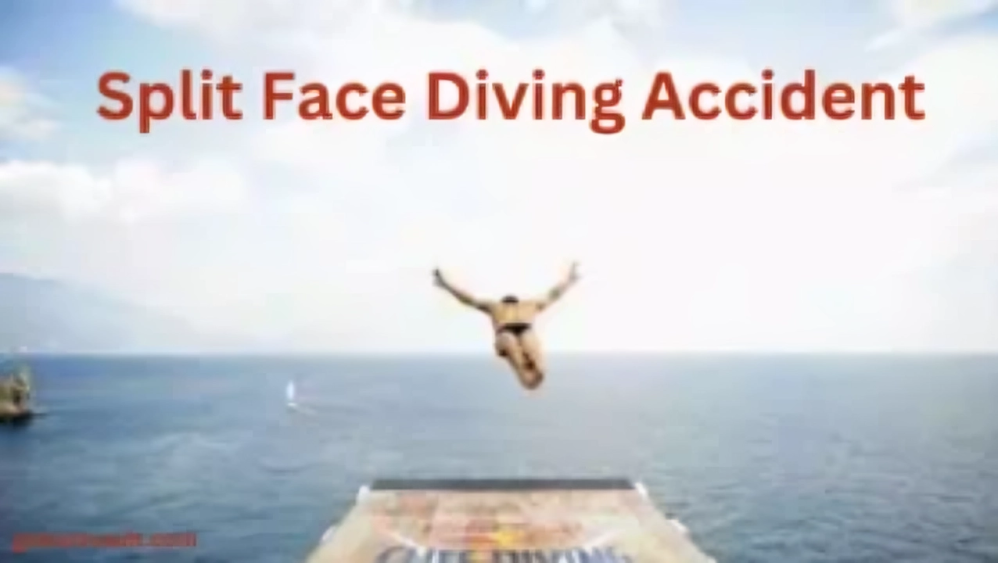Scuba diving is an exciting and risky activity that allows people to explore the amazing underwater environment. Like any adventure sport, it does have some inherent risks, though, so proper preparation, training, and adherence to safety protocols are required. One such risk is the split-face diving mishap, which is uncommon but can be fatal and emphasizes how important scuba diving safety is.
In this lengthy essay, we’ll discuss split-face diving accidents and examine their causes, consequences, and—above all—prevention techniques. This article will provide practical tips and suggestions for ensuring your safety while submerged in water, regardless of your diving experience level or whether you’re a novice thinking about taking your first dive.
Split Face Diving: What Is It?
Before delving into the particulars of split-face diving accidents, let’s clarify what split-face diving is. Split-face diving, sometimes referred to as “cave diving,” is the practice of exploring underwater caverns and caves, many of which have tight passageways and difficult navigation. Split-face diving calls for specific training, gear, and an in-depth knowledge of subterranean ecosystems, in contrast to open-water diving.
A Split-Face Diving Accident’s Anatomy
1. Insufficient Training
One of the main causes of split-face diving accidents is inadequate training. A certain set of abilities is needed for cave diving, such as managing guidelines, buoyancy control, and limited space navigation. Untrained novice divers considerably enhance their chance of accident when they enter cave conditions.
Avoidance:
- Enroll in a cave diving certification course.
- Prior to trying cave diving, get experience in open-water dives.
- Dive with an experienced cave diving mentor.
2. Equipment malfunctions
In the cave environment, defective or insufficient equipment might be disastrous. To guarantee safe cave exploration, regulators, dive lights, and buoyancy control systems need to be in perfect working order. An isolated equipment malfunction raises the possibility of a split-face diving mishap by inciting fear and confusion.
See Also: Lapis Lazuli Steven Universe: Deciphering the Secrets of a Treasured Object
Avoidance:
- Be sure to inspect and repair your diving equipment on a regular basis.
- Have backup gear on hand, such as a spare oxygen supply and dive light.
- Acquaint yourself with your apparatus and put emergency protocols into practice.
3. Dim Lighting
Cave habitats frequently have low light levels or silt that divers have stirred up, making visibility difficult. It may be harder to maneuver and more likely to become lost or tangled in rules as a result of the reduced visibility.
Avoidance:
- To improve visibility, get a decent dive light.
- Keep the right buoyancy control in place to lessen the disturbance of silt.
- Adhere to the guidelines and stay in touch at all times.
4. Ignoring Time Limits and Depth
Strict depth and duration restrictions must be followed by cave divers in order to avoid oxygen poisoning and decompression sickness. You run the risk of becoming hurt or killed if you climb faster than these limits.
Avoidance:
- Give careful thought to the climb and descent rates of your dives.
- To keep track of time constraints and depth, use dive computers.
- Always adhere to the procedures and safe diving techniques.
The Repercussions of a Split-Face Diving Mishap
- When split-face diving goes wrong, the following terrible things can happen:
- Drowning occurs when one cannot find a method to escape or surface.
- injuries brought on by falls, entanglements, or broken equipment.
- Hypothermia: The chilly water temperatures in cave systems can result in hypothermia.
- Use dive computers to monitor depth and time limits.
- Panic: Panic is a reaction to stress and confusion and exacerbates the situation.
- Scuba diving’s split-face dive is an exciting and difficult experience, but it’s not risk-free. Prioritizing safety above all else is crucial for anyone contemplating cave diving. It is imperative to follow instructions, maintain equipment properly, have enough training, and observe time and depth limitations in order to reduce the risks involved in split-face diving.
- Recall that although exploring the undersea environment can be spectacular, it can also be cruel. You can make your split-face diving adventures thrilling, risk-free, and enjoyable by understanding the potential hazards and taking the appropriate precautions. As you dive carefully, may your undersea excursions fill you with surprise and awe.
Accidental Face Splitting in Spain Diving
The remarkable footage of the Split Face Diving incident was first shared on Reddit by member Zombiedub. It has been more than ten years since this eerie video first came on the internet. In the era of digitalization, content that has made its way online is nearly hard to entirely remove or stop from resurfacing. That’s demonstrated by the film of the Split Face Diving catastrophe, which resurfaces even after all this time. The online community has responded to its comeback with a plethora of thought-provoking comments. Go deeper into this incidence by reading on.
According to Sarkari Exam, a teenager from Beirut was engaged in the Split Face Diving accident that happened in June 2009. At the time of the tragedy, which happened across from the American University on the Manara Promenade, the poor child was only 16 years old. The victim’s brother is seen in the widely shared footage of the tragedy successfully plunging 40 feet into the sea. The adolescent crashed into a hard surface and then plummeted into the ocean, causing a tragic accident. Please continue scrolling for more information.
There were disastrous effects from the accident. A bystander who saw the incident, unfortunately, revealed that the youngster who struck the concrete surface before diving into the ocean needed quick treatment from the Civil Defense. The video shows the witness yelling in Arabic and requesting assistance from civil defense. After after, the film switches to an emergency department scene at an American university hospital. The medical staff did their best to keep the 16-year-old boy’s face intact and preserve an unobstructed airway, but regrettably, the boy tragically passed away from his serious wounds two days later. Follow us for more updates.







